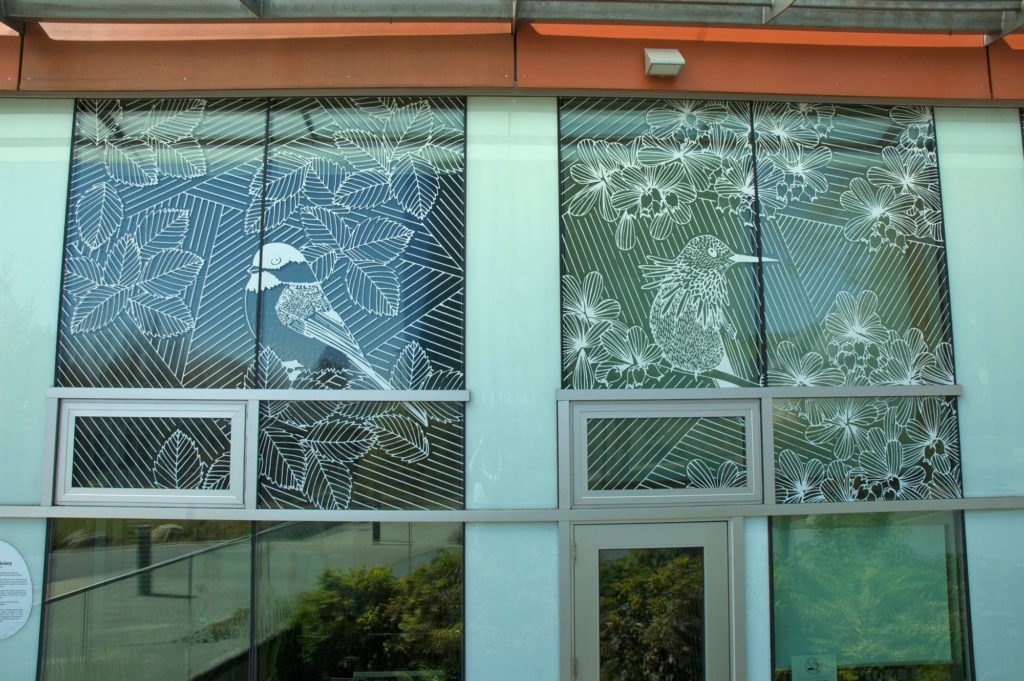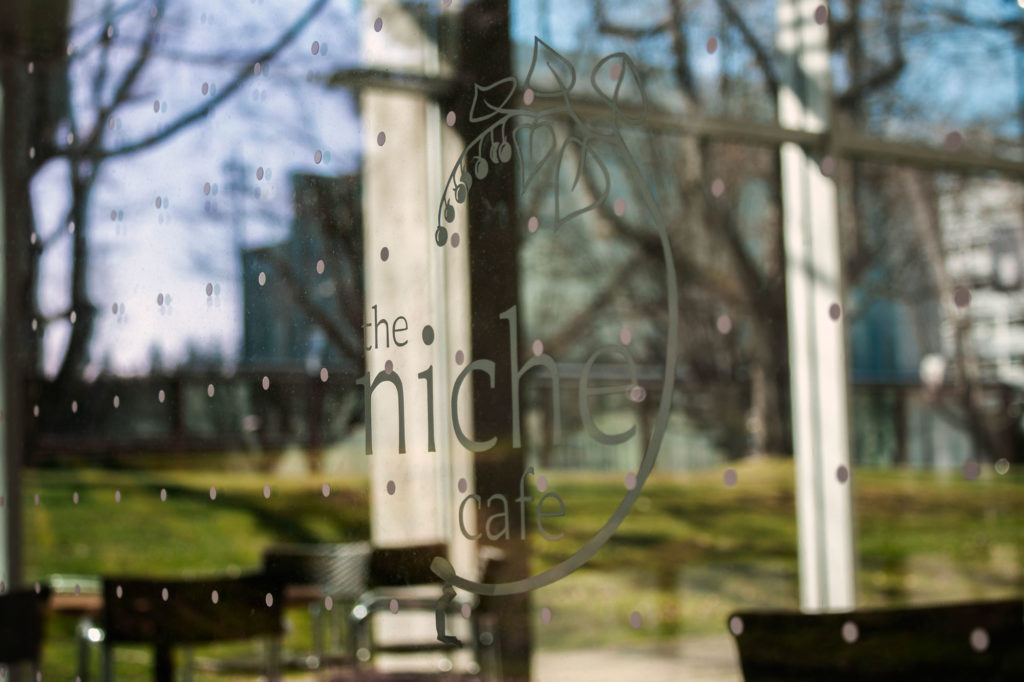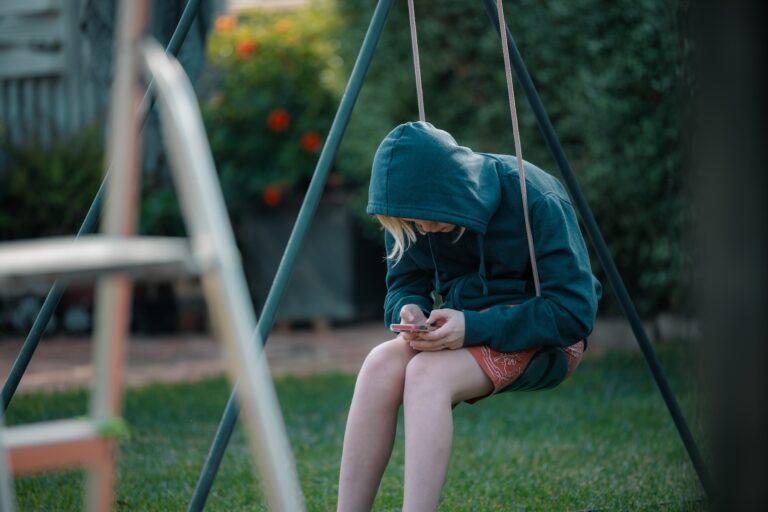For the love of birds: Saving species at UBC is a campus-wide initiative
In 2014, four UBC Vancouver students set out to discover just how the campus was impacting migrating birds—specifically, how many birds die on campus annually from colliding with buildings.

The UBC Vancouver campus is host to a staggering array of birds, and spring is their season. Bird calls fill the air as thousands of songbirds and other migrating species enjoy a well-deserved layover on their bi-annual journey along the Pacific Flyway, a major migratory route extending from Alaska to Argentina. The Point Grey campus lies adjacent to the Fraser River Estuary, which serves as a crossroads and critical refuelling stop for birds from 20 countries and three continents—and many of the millions of birds it attracts each year find their way to campus.
In 2014, four UBC Vancouver students set out to discover just how the campus was impacting migrating birds—specifically, how many birds die on campus annually from colliding with buildings. An Environment and Climate Change Canada study released in 2013 ruffled feathers with findings that up to 25 million birds die annually in Canada from striking buildings. But the study focused on Eastern cities with very high numbers of birds during the migratory period, and didn’t provide data on what was happening with human-caused bird mortality west of the Rocky Mountains, and certainly not on UBC’s Vancouver campus.
Led by the UBC SEEDS Sustainability Program in partnership UBC Sustainability and Engineering, UBC Building Operations, and Environment and Climate Change Canada, the students launched the first of four research investigations spanning several years. After months of collecting and analyzing data for a random selection of buildings across campus, they discovered that not only were birds dying from buildings strikes, but dying in staggering numbers.
They estimated that up to 10,000 birds were dying each year as a result of building collisions on campus.
“Birds flying into windows is of course a ubiquitous problem; it’s rare to hear of someone who hasn’t heard of or seen a bird colliding with a window, and UBC is no different,” said Liska Richer, study co-sponsor and manager of UBC’s SEEDS Sustainability Program. “Still, we were surprised by the numbers and curious about the gap of research on the West Coast. Could we contribute to an understanding of the issue and identify and test new measures to mitigate bird mortality on campus?”



The SEEDS program is designed to advance sustainability ideas, policies, and practices on issues of exactly this type, and Richer and her colleagues were determined to find solutions.
“We were very focused on finding a solution that could be leveraged not just on campus, but in communities far beyond campus,” said Richer. “Across North America, the estimated number of migrating birds killed annually in collisions with buildings ranges from 100 million to 1 billion. In fact, a 22-year study recently completed in the United States found that up to 500 million birds are dying from striking buildings each year in that country. As an indicator species, birds are crucial because they provide ecosystem services like pest control, pollination and seed dispersal.”
A key area of SEEDS’ work is problem-solving sustainability-focused challenges by using campus as a living laboratory. For Richer and her team, the first step was to review UBC Sustainability and Engineering’s Bird Friendly Design Guidelines for buildings on campus, part of the university’s Green Building Action Plan.
“Glass used in windows, walkways and guardrails is a particular hazard for birds because they are unable to perceive it as a solid object,” said Penny Martyn, manager of green buildings on the Point Grey campus. “Collisions occur when birds try to fly into the sky or vegetation they see through, or reflected by, the glass. And this is especially true for migrating species, which are less familiar with our campus. Our goal with UBC’s Bird Friendly Building Design Guidelines is to raise awareness about the dangers buildings pose to birds and ensure building design on campus reflects effective strategies.”
Sharing elements with the bird-friendly building standards of Vancouver, Toronto and San Francisco, UBC’s guidelines are unique in that they are designed to be easy to implement without adding to construction—or retrofitting—costs. Also, by offering cost-effective solutions for developers and occupants, the standards encourage innovation in design. Strategies include minimizing the use of glass, dampening reflections using visual markers on the glass, installing screens or shades, pulling down indoor blinds, and reducing light pollution from buildings and in the landscape. With the guidelines complete, UBC is aiming for all new buildings to be 100 per cent compliant by 2020.
SEEDS identified the recommendations involving visual markers as an excellent opportunity to investigate a solution with the potential to be scaled. The team created a campus-wide art competition, called For the Love of Birds, designed to prevent bird collisions, educate the public, and bring attention to bird biodiversity on campus.
The competition drew submissions from a wide variety of programs, including Zoology, Media Studies, Engineering Physics and Political Science, with Interdisciplinary Studies PhD candidate Lora Zosia Moon’s creation of an intricate window decal selected as the winning design. Her bird-friendly artwork tells the story of biodiversity on campus, showcasing dozens of bird, plant and tree species while adhering to the standards outlined in the bird-friendly building standards.
“My artwork focuses on the incredible range of flora and fauna on campus and draws the viewer into the textures and shapes of the natural world,” said Moon. “My goal was to emphasize the everyday birds that are critical to our shared ecosystem—the Black-capped Chickadee, Anna’s Hummingbird, Steller’s Jay, and Cedar Waxwing—and the intimate and inseparable links between us.”
To view Moon’s design, visit the Loop Café in the Centre for Interactive Research on Sustainability Building (2260 West Mall), where the decal is installed on the windows.
The Bird Art project attracted attention on and off campus, with a second permanent installment planned for the UBC Botanical Gardens. SEEDS has also applied for funding to create a bird-friendly building design toolkit.
“We are excited about the different opportunities that have arisen as a result of For the Love of Birds,” said Richer. “The toolkit in particular is very exciting. If funded, it would enable SEEDS and its collaborators to work with partners off- and on-campus to develop an accessible solution that could be used by communities and individuals to mitigate bird collisions literally in their own backyards.”
Related SEEDS projects include bird monitoring sensors, which were developed by students from the Faculty of Applied Sciences. The sensors were designed to collect data on bird strikes against windows, and are in prototype stage. A third project was completed by a student from Sustainability and Engineering and Geography, which identifies bird collision hot spots using publicly-available GIS data.



